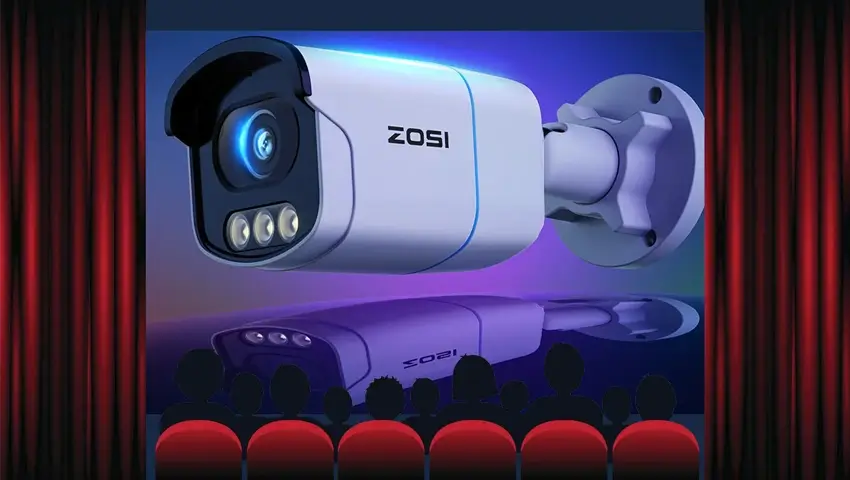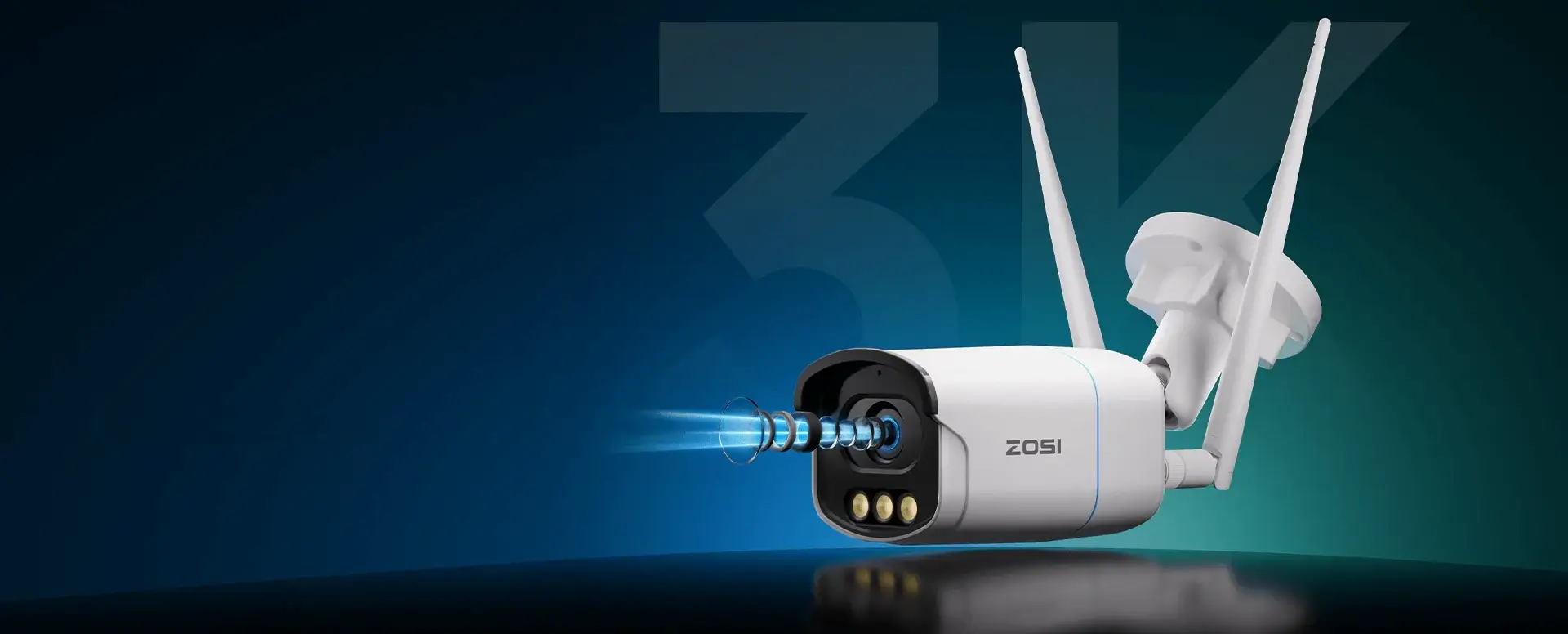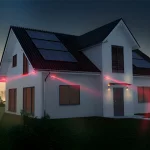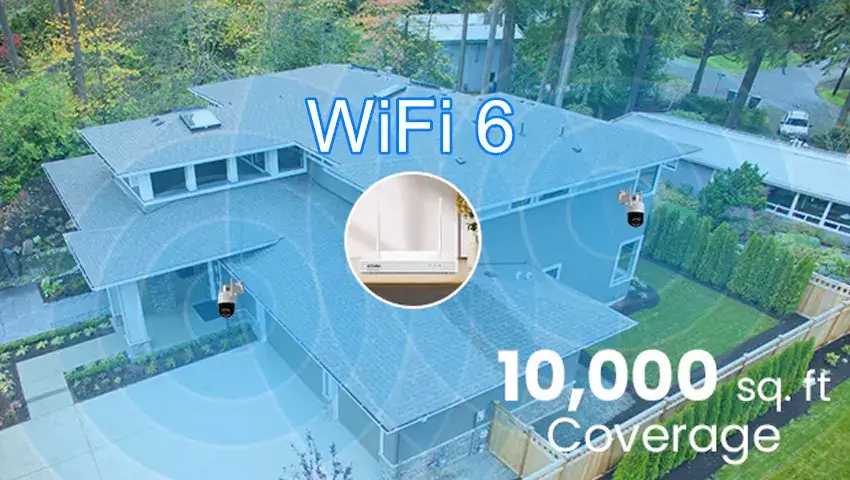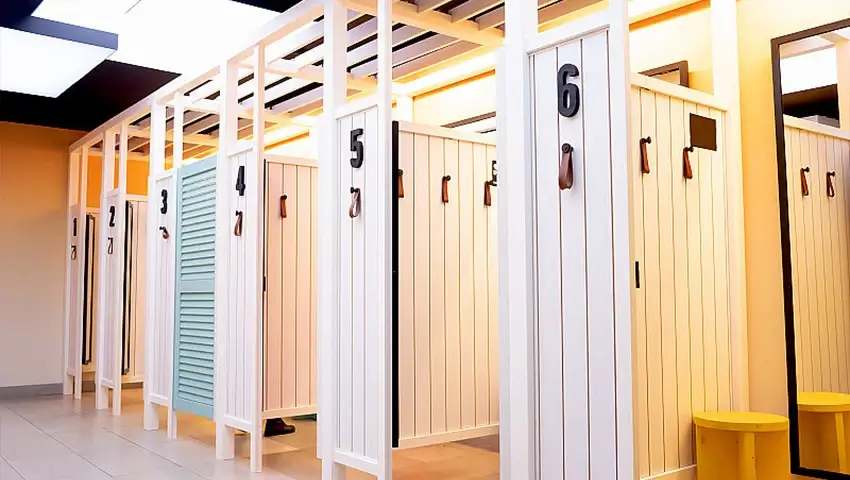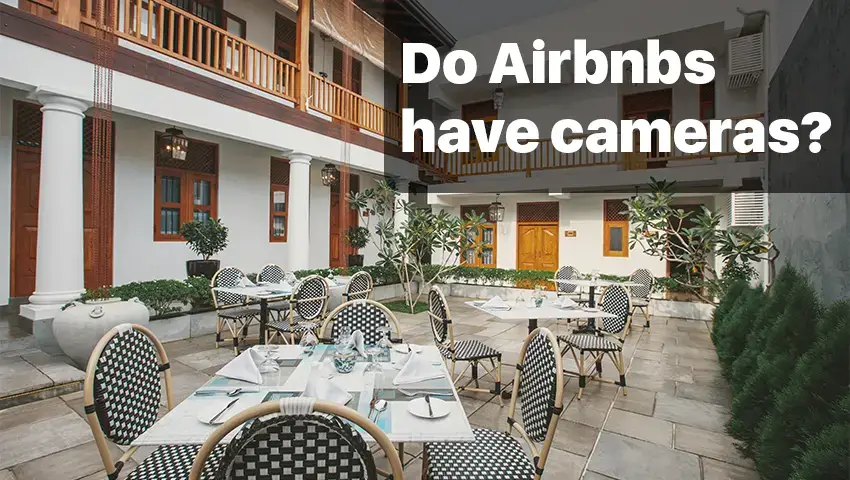Do you ever wonder whether movie theaters have cameras? The answer is yes – most movie theaters install security cameras in auditoriums, hallways, and lobby areas.
Read on to discover the reasons behind their installation, the legality of their use, and how you can identify security cameras in the movie spot.
Contents
Why Movie Theaters Install Cameras?
There are several reasons for movie theaters install cameras, primarily to enhance security and safety. Here are some of the main motivations behind camera usage in movie theaters:
- Deter Crime: Security cameras act as an effective deterrent against crimes such as theft, destruction of property, violence, and more. Their mere presence indicates that wrongdoers are being watched, which discourages them from targeting the venue. Statistics show that theaters with cameras tend to report fewer instances of crime.
- Prevent Piracy: Cameras inside auditoriums enable staff to monitor for illegal recording of the movie being played. Video recording is strictly prohibited inside cinemas, but some individuals attempt to film the screening on their mobile devices to distribute bootleg copies online or make pirated DVDs. Security cameras can help to catch such pirates.
- Ensure Customer Safety: Monitoring customer movements on cameras enables the theater personnel to watch out for incidents such as fights, accidents, and other health emergencies and immediately intervene or provide help. Cameras are also useful to trace missing children via CCTV footage if needed.
- Manage Employees: Camera feeds are useful for remotely coordinating employees, directing task prioritization, and monitoring staff behavior with patrons. They can also capture evidence if employees are stealing, sleeping during duty, helping with piracy, and more.
- Document Emergencies and Accidents: Security camera footage serves as legal evidence in case of incidents such as falls, violence, fires, and other accidents on the premises. Some cameras are installed specifically to reduce insurance premiums or make the claims process easier in such events.
Do All Movie Theaters Have Cameras?
The answer is that most major movie theater chains, including AMC, Regal Cinemas, and Cinemark, have basic video surveillance systems in place. However, the extent of their camera coverage varies. For instance, lobby and hallway cameras are more common than those inside individual theaters. Smaller independent cinemas have more flexibility on cameras.
New multiplexes are more likely to have comprehensive camera systems watching lobbies, hallways, auditoriums, screens, exits, and entrances. As video analytics improve, it enables detecting piracy.
Older cinema halls may lack proper security tech unless recently upgraded. However, most theaters do have some cameras in place, even if not installed inside viewing rooms.
Types of Cameras Used in Movie Theaters
Here are some of the most common varieties of security and surveillance cameras installed in movie theaters:
- Dome Cameras: These compact, hemispheric cameras offer 360-degree coverage of rooms from ceilings and corners. The dome shape makes it hard to pinpoint the camera’s line of sight, and they are commonly seen in hallways and theater rooms.
- Bullet Cameras: These weatherproof, bullet-style cameras are typically used for outdoor surveillance and pointing at entry points. Their long shape also makes it easy to capture faraway lobby and hallway activity without blind spots. Some models have night vision capability.
- PTZ Cameras: High-end PTZ (pan-tilt-zoom) cameras can remotely pan, tilt, and zoom to track activity and monitor wide auditoriums effectively. Some models have 4K sensors, enabling monitoring screens for piracy from the back rows.
- Discrete Spy Cameras: These cameras often hide near exits, within exit signboards, or other inconspicuous locations, offering enhanced security monitoring.
Video Surveillance is Legal in Movie Theaters
Video surveillance is legal in publicly accessible areas of a movie theater, including the lobby, hallways, ticket counters, food areas, entry gates, parking lots, external facades, and more.
However, installing cameras inside the actual theater/screening rooms is subject to individual state laws. It is necessary to post signs indicating that active CCTV cameras are in operation. Privacy laws determine if back rows or seating areas inside rooms themselves can be monitored directly, so certain restrictions may apply.
That being said, film piracy deterrence laws enable catching illegal camcorder use during screenings via long-range cameras.
Overall, while video surveillance in theaters is legal, room surveillance itself may fall into gray areas depending on the region.
How to Tell If There Are Cameras in Movie Theater?
Here are some tips on how to tell if there are cameras on the premises:
- Observe Visible Devices: Carefully examine corners of auditoriums, hall ceilings, and lobbies for small visible hemispheric dome cameras. You may also spot bullet cameras pointing at exterior or hallway entries, or black glassy lenses or recording equipment installed on walls.
- Check Theater Policies: Notices, posters, or warnings indicating surveillance cameras are in operation may be present at box office counters or building entrances. Websites and ticket purchase portals may also highlight security policies if cameras are in use on their premises.
- Ask Staff: Don’t hesitate to ask personnel, such as managers, ushers, or cleaners, directly about security cameras on site. However, it’s worth noting that some surveillance may be kept confidential, so an absence of confirmation from staff does not necessarily mean that surveillance cameras are not installed on the premises.
- Pay Attention to Security Notices: Signboards or stickers explicitly warning patrons about CCTV cameras in use are a definite giveaway. You may spot stickers with “These premises are under video surveillance” or similar visual indicators that confirm the cinema hall’s camera usage.
Camera Recommendations for Low-light Scenes Such as Movie Theaters
1. Zosi IPC-186
Zosi IPC-186 innovative camera delivers remarkable 5MP QHD true color night vision image quality thanks to its F1.0 super aperture and 1/1.79” image sensor.
This PoE camera is equipped to transform true color night vision in the dimmest light, and its 5MP sensor delivers unprecedented image crispness, allowing you to zoom in and view small objects clearly.
5MP AuroraLux Security Camera - C186
- 3K/5MP Super HD
- AuroraLux True Color Night Vision
- 3000K Neighbor-Friendly Warm Light
- Smart Person/Vehicle Detection
- Light & Siren Deterrence
- Two-Way Audio Talk
- 128GB SD & PoE NVR
- IP66 Waterproof Design
2. Zosi 88Q2-1865W
Zosi 88Q2-1865W security camera system is ideal for large venues like movie theaters that require comprehensive video surveillance in multiple areas. The kit includes a high-capacity 8-channel NVR capable of connecting eight separate PoE cameras, delivering professional-grade HD monitoring to cover every corner both indoors and outdoors.
The centralized 8MP NVR records sharp UHD footage from all connected cameras simultaneously, and its eight channels allow expanding coverage with additional cameras as needed. The system includes a 2TB HDD with capacity for over a week of 24/7 recording from maximum cameras.
FAQs
1. Do movie theaters have night vision cameras?
Yes, most modern movie theater surveillance systems utilize cameras with built-in IR night vision capability. Enhanced low-light recording is essential to monitor the premises in darkness.
2. How do cinemas detect cameras?
Theaters use a combination of visual confirmation and video analytics to detect illegal usage of cameras in auditoriums. Long-range specialty cameras can identify handheld devices’ shapes even in dark rooms, and smart software checks for tiny lights from external camera lenses.
3. Are movie theater cameras monitored?
In large chains, all cameras may be actively viewed from a central security room for a real-time threat response. Smaller halls have local recordings that are checked in case of incidents. Certain cameras run automated analyses to only notify anomalies via alerts. Critical areas mostly have live oversight.
Conclusion
It’s evident that a majority of movie theaters have well-equipped camera surveillance, from big brands like AMC and Regal Cinemas to small-town community halls. Indoor cameras are necessary for reasons such as security, piracy prevention, and insurance. These cameras not only enhance surveillance but also ensure the safety and comfort of patrons.
